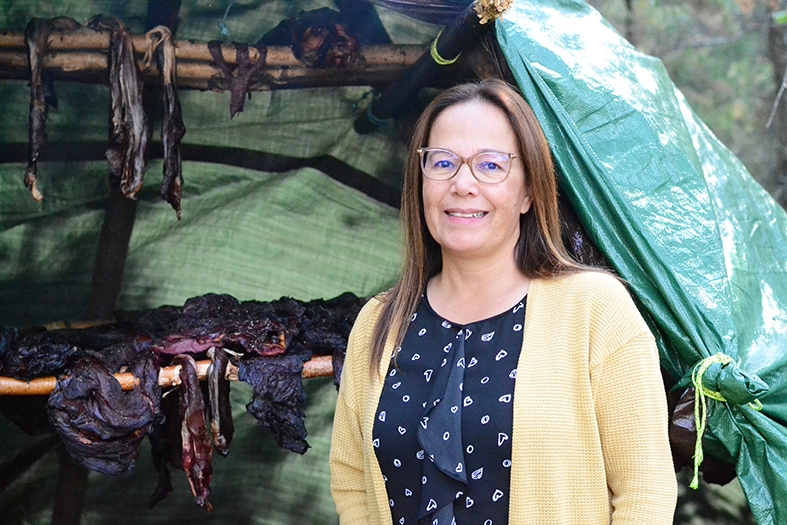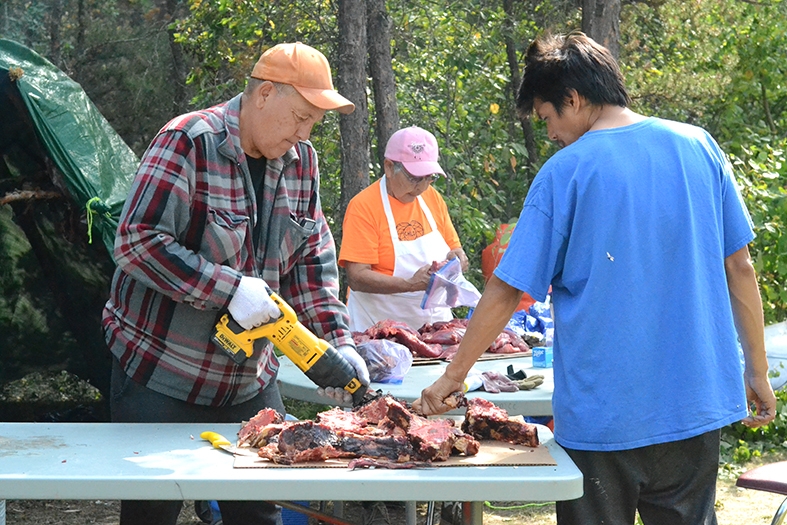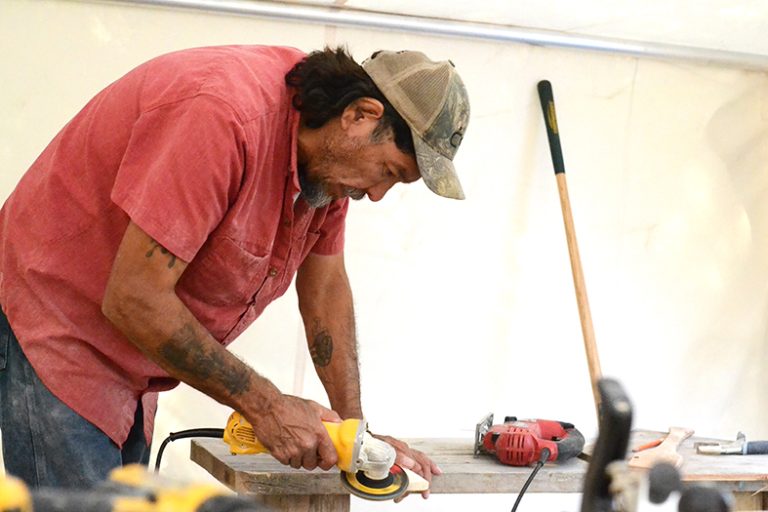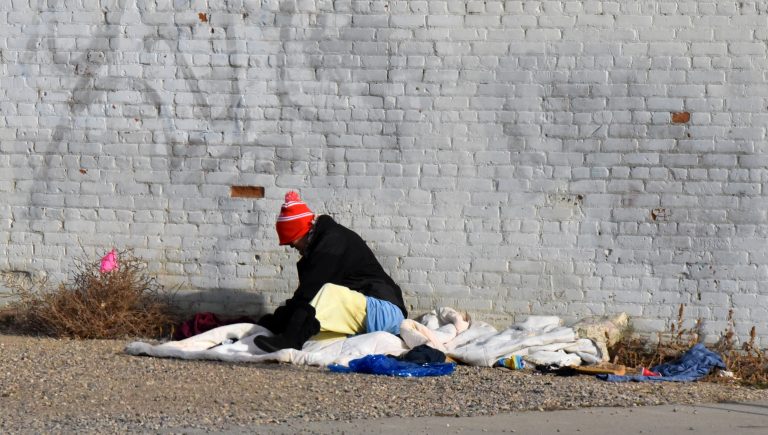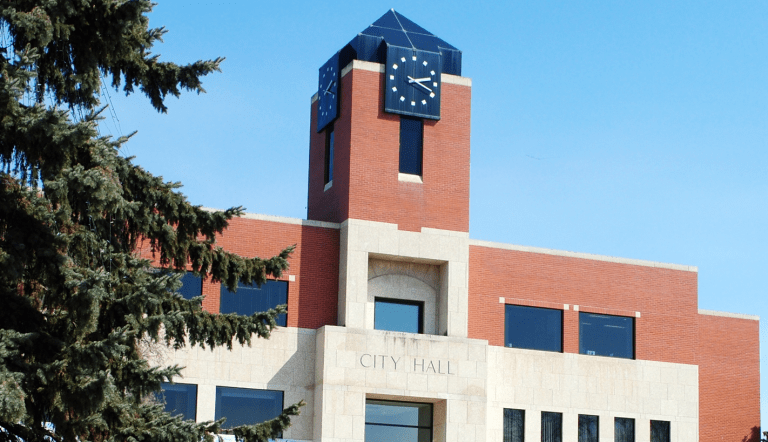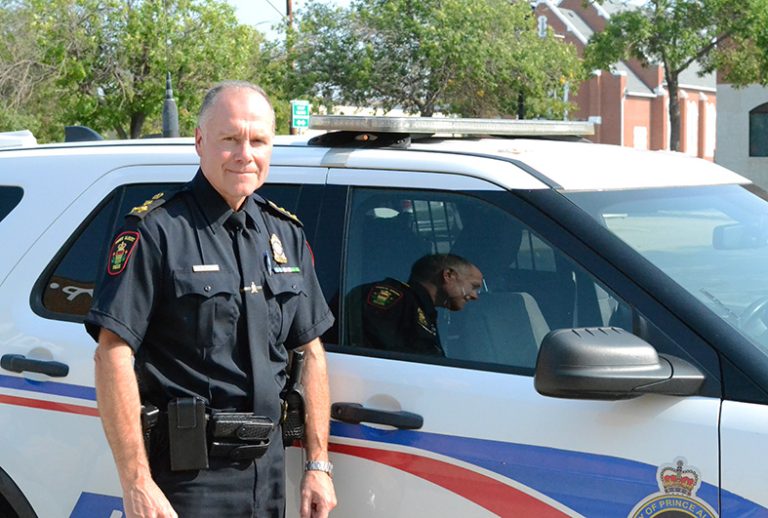Prince Albert’s interim police Chief Patrick Nogier sat down with the Herald to discuss how the organization is working towards re-gaining confidence, both from the wider community and from its own members. As Nogier explains, this involves a complex re-evaluation of its operations, including improved communication, an alternative call response and building relationships with community organizations.
Please note: This interview has been edited for length and clarity.
Q: Tell us about your work in your previous position with the Saskatoon Police Service.
A: I’ve got roughly 28, 29 years of policing with the Saskatoon Police Service. I’ve been very fortunate to fill a variety of positions. I did a stint in communications, and I had come from a world of K9, patrol and investigations and to go there as a supervisor, I was really questioning why I was being put in that position, but in hindsight, it was a really valuable experience. My current role there was superintendent in charge of the Criminal Investigations Division. It’s roughly 147 different people. There, we’ve got a wide variety within the Criminal Investigations Division – everything from a guns and gangs team, to a major crime unit, to forensic identification, sexual assault, both adult and children.
Q: Knowing the circumstances former Chief Jon Bergen left under, saying he and his family were receiving harassment both from the community and internally, how did you feel taking this interim role?
A: Nothing that happened in Prince Albert is unique. You can pull out various different organizations that have gone through trials and tribulations and peaks and valleys. Unfortunately, for the PAPS, they seem to be going through a bit of a valley and trying to find where the peak is again. Yes, it was a concern. A concern only in the fact that I wasn’t sure it was valid – what was the validity to it? When it comes to people expressing views through social media, that’s a very small opinion, in my opinion, and I don’t take a lot of stock in it. I think that consultation comes from face-to-face communication and it’s through that that you’ll determine the validity of people’s concerns.
Part of my response to coming to the organization wasn’t to investigate those or to be aware of those. Quite frankly, there’s so many other things that we’ve been working on that it’s the furthest thing from my mind.
Q: The Board of Police Commissioners and the Prince Albert Police Association said some of the 45 recommendations from Rod Knecht’s report have already been addressed. Which ones?
A: I knew what the recommendations were prior to coming, and when I came and I started looking into it, there were already initiatives that had been undertaken to achieve those goals, and this administration had no awareness of those recommendations or what they would be. That speaks volumes for the integrity of an organization to try to make sure that they were mapping a path forward.
Let me speak specifically about the alternative call response that we have. We’re currently in the process right now of developing a media strategy to ensure that the public understands the impact of having an alternative call response rather than sending officers. We talk about having a prioritization of calls – what are we sending our officers to? What can we afford to send them to with respect to making sure that they have a competent, adequate investigation and they’re providing a really good, calm environment when stressful times occur?
The day and age of us being able to be everything to everybody has come and gone. We know we’ve got high victimization; we’ve got a high violence rate. That requires an immediate police response. We know that there has to be a different type of resource allocation model.
We’ve prioritized now calls one through six, one being highest priority, need police assistance immediately. We’re responding to calls one, two and three and the calls four, five and six, if they can be triaged through another mechanism, that’s the path that we’ve taken.
If there’s a message for the public, it’s please don’t feel like it’s an all or nothing type of report, it means nothing, it’s a waste of their time to report it. We might be focusing on more of a hot button topic, but the individuals involved in that topic might also be associated to other types of crime that might not meet that severity index. But by making an arrest on that particular circumstance, it will inevitably have an impact on some of those lower crimes.
Q: Are there any other recommendations that stood out to you as wanting to implement as soon as possible?
A: They are all of concern for a chief of police. You have a board that wants to have enhanced structure; you have a board that wants to have a mandate that makes sense; you have a board that wants to be involved in policing operations within the community and that’s a responsibility for ensuring that the competency and the operation of the organization is sufficient – and that makes sense. From a chief’s perspective, providing feedback with respect to recommendations from the board is an important part.
The association, they play an essential role in providing the administration with the temperature of the organization. They have the best interests of the individuals, the men and women that put the uniform on, and the civilians that do all of the support services within the organization. That relationship needs to be very good, very open, very transparent.
Q: You’ve said that transparency with the public is important to you. In what ways are you doing that?
A: Transparency means that I will provide sufficient information so that people can understand the context by which my decisions are being made. I hope to be transparent in that capacity, so I’ll run up to the line that I know I’m limited to provide the detail that I know is likely what the public wants.
Without going into a specific case, it would probably pertain to every time you have a situation where an officer has been charged criminally while acting in the capacity of their duties. That will always be a situation where the public wants to know who, when, why, how. I think we’re all guilty at times at jumping to conclusions about how something happened and why, and that’s why we have process and, in particular, court process.
The chief will take certain actions to ensure that the public is satisfied that there’s no issue there that needs to be addressed, so whether it’s relieving an officer from duty, whether it’s reassigning them to administrative duties while that process is being playing out. Every situation is unique, there should be no cookie cutter approach to the decisions that are made.
Q: Indigenous leaders have said recent incidents, including the in-custody death of Saul Laliberte, are acts of systemic racism. What are you doing to ensure that all community members are treated with the same respect?
A: It starts right at training. It’s reinforcing good behaviours within the organization through discussion. It’s ensuring that your senior staff within the organization are having discussions and, quite frankly, holding officers accountable when maybe they sway across the line of having that respect and dignity in situations that sometimes are very difficult to pursue.
As a profession, I think we’ve acknowledged the fact that you have to continually review policies and protocols and sometimes inherently, there’s going to be some type of bias that you’re not even aware of that exists in current policies and practices that you have to be aware of and potentially pivot on. We’re having those discussions internally, we’re starting at the highest levels with administration, we’re filtering it down.
The other thing, too, is you’re looking to enhance relationships within the community, whether that be through the Prince Albert Grand Council, through the FSIN and I must say that in both circumstances, they’ve been very good to work with since I’ve been here. I think the other thing, too, is to ensure that you’re hiring with some diversity so you do have people that bring different ethnicities with them, different perspectives with them.
Q: In a recent interview with Chase Sinclair, a family member of Boden Umpherville, he said the police service first needs to recognize how response could have gone differently in order to have a repaired relationship. On behalf of the police service, what would you say to the loved ones of people who have died?
A: People need to understand that organizations are changing. When we consider a trauma-informed, discussion approach reaction, we’re still learning what that means with respect to front-line policing, to investigations, to victim service response.
We talk about victim advocate case review. What it entails is bringing an outside group to review closed sexual assault files so that they can provide you with feedback about how you may do your job differently. They have access to video, the interviews; they have access to any in-car system that may have captured something. They have access to every report and they have access to prosecutors requests. We are now getting feedback that allows us to pivot, and to have discussions with our investigators to say ‘You know, the way that you asked that question had an impact on that victim. The way you responded to that individual, look at it through this lens and how they may have felt.’ Little things that we’ve never seen before and that police have never done before are now occurring today.
Whether or not it expands to go from just sexual assaults into potentially homicide investigations or serious assault investigations is yet to be determined. But I think you’re seeing more conversations on behalf of chiefs of police that are now saying ‘We have to re-visit it.’
Q: You were appointed as chief temporarily, but is there the possibility of you becoming chief permanently?
A: I wouldn’t commit to any specific comment on that. What I can tell you right now is that I have a six-month contract that keeps me here relatively until November. If they found a chief that they wanted to bring in that met the criteria and fulfilled the mandate, then I would be on my way back to Saskatoon.

